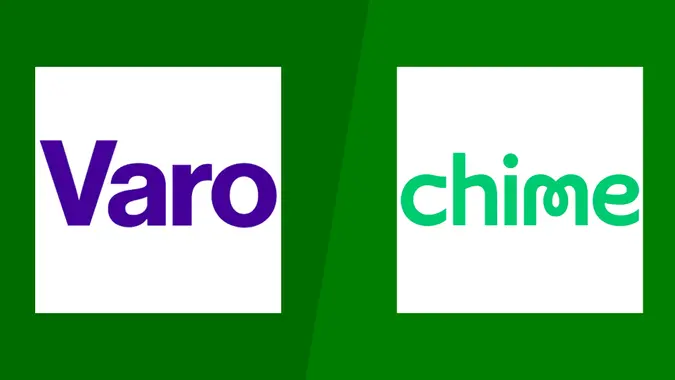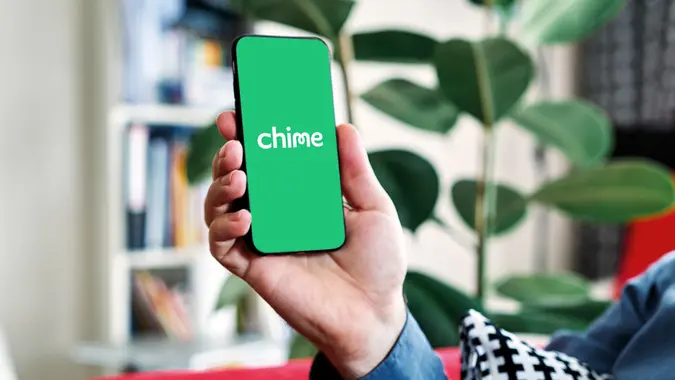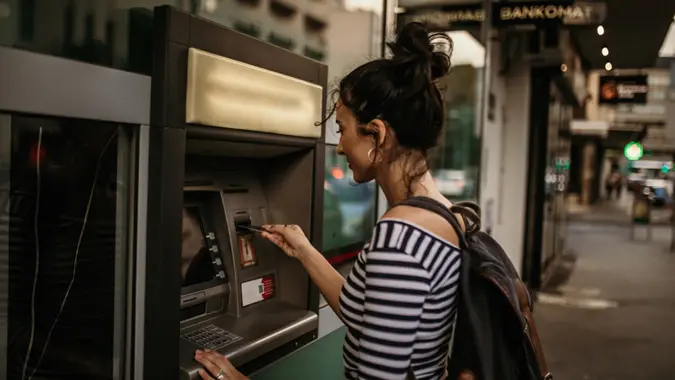The Future of Banking: Transacting Without Physical Cards

Commitment to Our Readers
GOBankingRates' editorial team is committed to bringing you unbiased reviews and information. We use data-driven methodologies to evaluate financial products and services - our reviews and ratings are not influenced by advertisers. You can read more about our editorial guidelines and our products and services review methodology.

20 Years
Helping You Live Richer

Reviewed
by Experts

Trusted by
Millions of Readers
The banking and transaction landscape is undergoing a significant transformation with the rise of contactless payments and the evolving nature of card-not-present (CNP) transactions. This shift, driven by technological advancements, is moving us away from traditional physical cards and cash — and toward services and apps such as Apple Pay and Google Wallet.
Contactless Payments: The New Norm
The use of near-field communication (NFC) technology in contactless payments is gaining traction. As PSPBox noted in a recent LinkedIn article, “Contactless payments are faster than traditional card transactions, reducing the wait time at checkout lines.” This method allows for transactions through smartphones or smartwatches, eliminating the need for physical cards.
Understanding Card-Present and Card-Not-Present Transactions
Despite the absence of a physical card, NFC contactless payments are categorized as card-present transactions. Fintech writer Nick Vasco, via Gravity Payments, explained: “Mobile wallet payments, like Apple Pay, are considered card-present transactions because the cardholder is physically present, and the card data is securely stored on the device.”
Vasco further clarified the distinction between contactless and CNP transactions: “While both contactless and CNP transactions allow for payments without a physical card, the key difference lies in the presence of the cardholder. In contactless transactions, the cardholder is physically present and uses a secure device for payment, whereas in CNP transactions, the cardholder is not present, and the transaction typically occurs online or over the phone.”
Security in the Digital Transaction Era
“Contactless payments use encrypted technology to secure transactions, reducing the risk of fraud compared to traditional card transactions,” stated PSPBox — a definite plus in an era rife with financial scams. Vasco added that while CNP transactions are more susceptible to fraud, implementing security measures like CVV and address verification can help mitigate these risks when shopping online or making bill payments.
The Challenges Ahead
Despite their growing popularity, contactless and CNP transactions face challenges such as technological reliance and potential extra fees. However, both PSPBox and Vasco agreed that these methods are likely to become more prevalent as technology evolves, indicating a significant shift in standard day-to-day banking practices.
The Business Perspective and Bottom Line
Vasco’s insights revealed that CNP transactions are particularly advantageous for online businesses and services without physical locations. “CNP transactions are useful for various types of businesses, especially those that operate online and don’t have a physical location,” he explained.
The banking sector is steadily moving towards a future where physical cards become less central. Contactless and CNP transactions, with their convenience, speed, and enhanced security, are at the forefront of this shift. As these technologies continue to mature, they promise to redefine the average American’s shopping and banking habits.
Editor's note: This article was produced via automated technology and then fine-tuned and verified for accuracy by a member of GOBankingRates' editorial team.
 Written by
Written by  Edited by
Edited by 

























